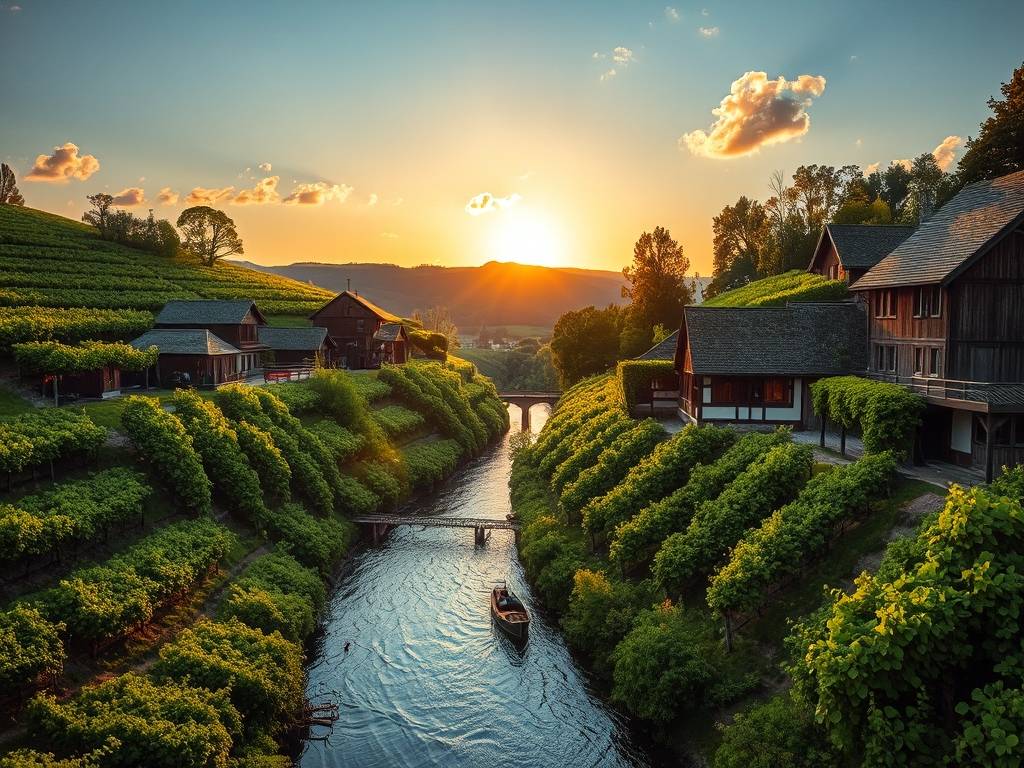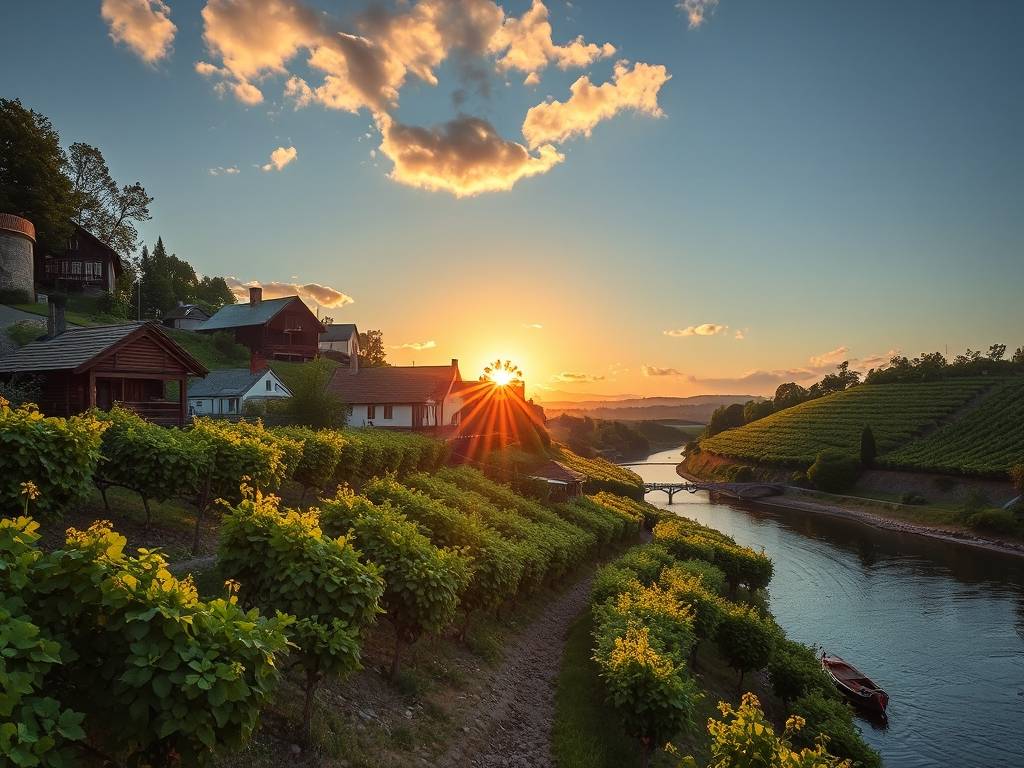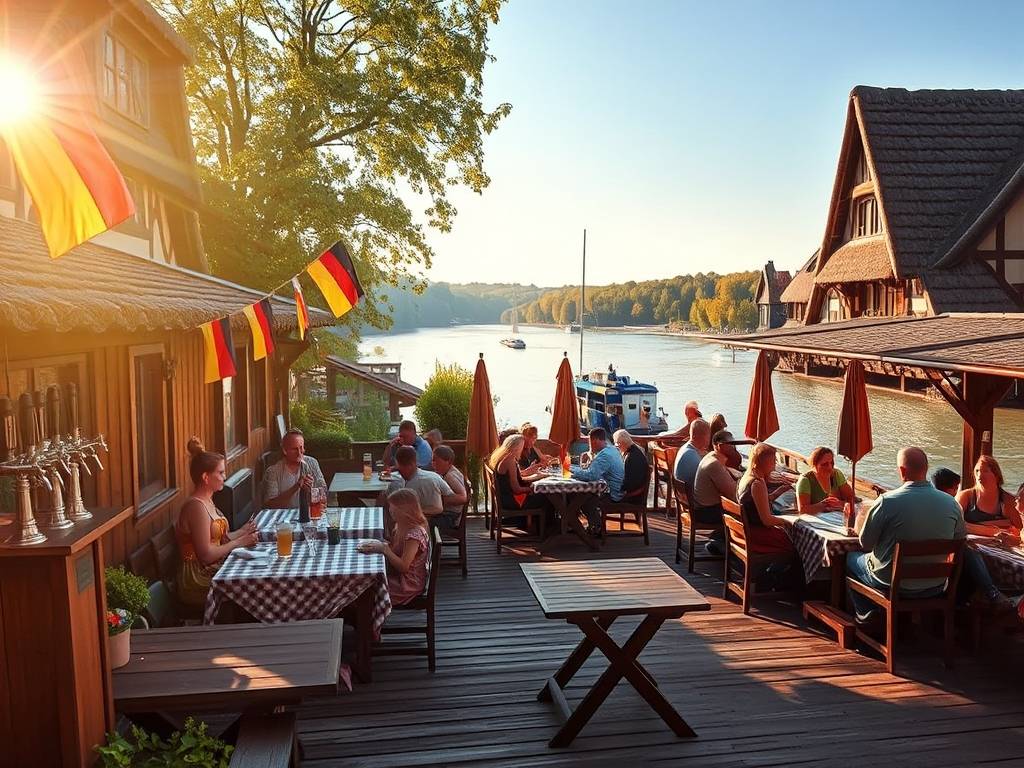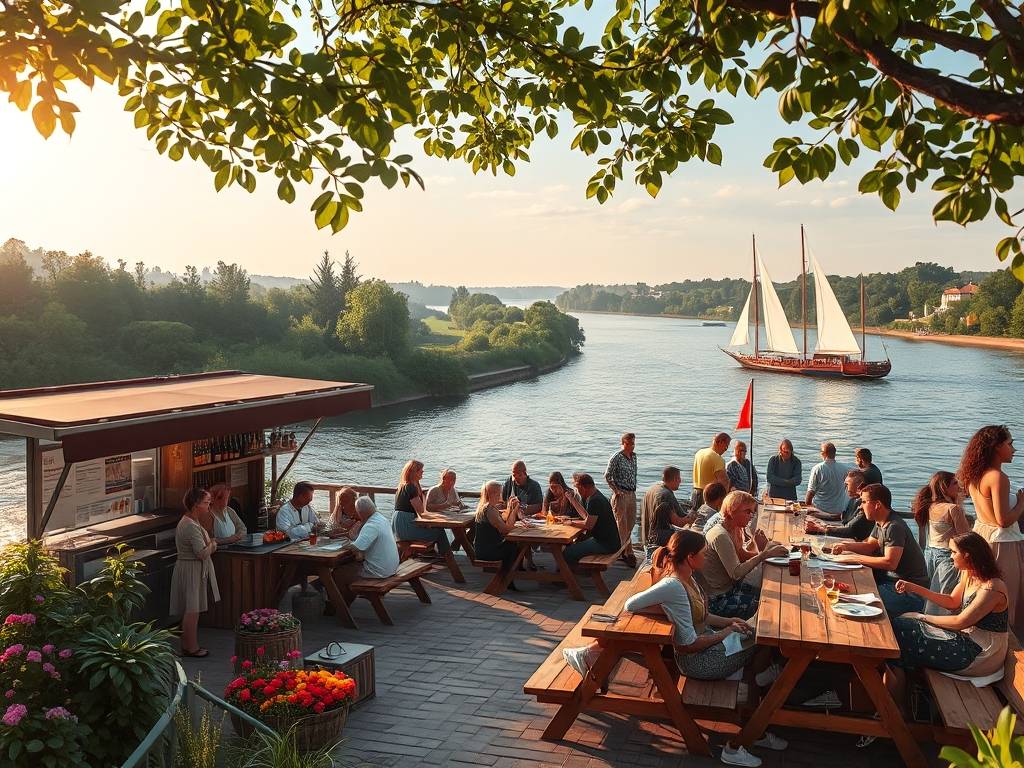Global Travel Information
Elbe River Wine Regions: Vineyards Near the Waterway
The Elbe River's Liquid Gold: A Journey Through Saxony and Saale-Unstrut's Vineyards
There's a certain magic to wine regions shaped by water. Rivers are more than just picturesque backdrops for postcard-perfect vineyard photos; they are the lifeblood of the terrain, moderating climates, reflecting sunlight, and creating unique environments where grapes can thrive in seemingly unlikely places. Nowhere in Germany is this more evident than along the serene course of the Elbe River. Far from the more famous wine roads of the Rhine and Mosel, the Elbe River wine regions offer a discovery—a tale of resilience, stunning landscapes, and crisp, elegant wines that are entirely their own.
Our journey focuses on two distinct, yet connected, appellations: Saxony (Sachsen), Germany's most north-eastern and one of its smallest wine regions, and Saale-Unstrut, its neighbor to the west. Both are intrinsically linked to the Elbe and its tributaries, creating a cohesive yet diverse wine route that promises unforgettable experiences for any wine enthusiast.

Saxony: Europe's Northeasternmost Vineyard
Let's start in Saxony, a region often hailed as a viticultural miracle. Nestled in the southeastern corner of Germany, its vineyards are the most northeastern in all of Europe. The city of Dresden is the vibrant heart of this region, with the Elbe River flowing gracefully through its center. The river’s role here is paramount. It acts as a giant thermal reservoir, absorbing heat by day and releasing it slowly throughout the night. This mitigates the risk of frost and creates a milder microclimate, a protective embrace that allows the delicate vines to survive and prosper in a continental climate that would otherwise be too harsh for quality viticulture.
The landscape is simply breathtaking. Imagine steep, terraced vineyards rising dramatically from the riverbanks, with historic villages and imposing castles like Schloss Pillnitz dotting the skyline. This is the Saxon Wine Route, a 55-kilometer trail that is best explored on foot, by bike, or even by paddle steamer—a delightful and nostalgic way to view the vines from the water itself. The most famous vineyard site is arguably the Dresden Elbe Valley Vineyards, a UNESCO Cultural Landscape, where the connection between culture, history, and viticulture is tangibly alive.
When it comes to wine, Saxony has a clear star: Goldriesling. This rare grape, virtually exclusive to this region, produces vibrant, aromatic wines with notes of citrus, green apple, and a characteristic spiciness. It’s a true taste of place. Of course, the classic German varieties are also masterfully crafted here. The Saxon Elbe Valley white wines, particularly Riesling and Müller-Thurgau, are known for their racy acidity, light body, and mineral-driven profiles. They are not the powerful, petrol-aged Rieslings of the Rhine, but rather delicate, fragrant, and incredibly food-friendly. A glass of Saxon Riesling, enjoyed at a Strausswirtschaft (a temporary, family-run wine tavern) amidst the vines, is a moment of pure, unadulterated joy.
Saale-Unstrut: The Triassic Treasure
Traveling northwest from Dresden, the Elbe leads us to the Saale-Unstrut region. Named after the two rivers that converge here—the Saale and the Unstrut—this area feels more rustic and ancient. The climate is similarly continental, with cold winters and warm summers, but the landscape is different. The vineyards are often perched on steep, south-facing slopes overlooking the winding rivers, nestled atop shell limestone and keuper soils—remnants of a prehistoric sea. This unique Triassic soil composition in Saale-Unstrut imparts a distinct, crisp minerality to the wines.
Saale-Unstrut is a hidden champion of German wine, producing some of the country's most balanced and elegant dry wines. The focus here is on purity and expression of the stony terroir. While Riesling plays a role, the undisputed king is Weissburgunder (Pinot Blanc). The best Pinot Blanc from Saale-Unstrut is a revelation: dry, medium-bodied, with aromas of yellow apple, pear, and a hint of almond, all backed by a clean, stony finish. Grauburgunder (Pinot Gris) and Silvaner also excel, producing structured and age-worthy wines.
But it's not just about white wine. Thanks to climate change and the moderating effect of the rivers, Spätburgunder (Pinot Noir) is on the rise. These are not the heavy, oak-laden Burgundian styles, but rather light-bodied, fragrant, and elegant reds with red berry fruit and a peppery, earthy nuance. Exploring the Saale-Unstrut wine region red varieties is a journey into the new frontier of German red winemaking.
A Tapestry of Terroir: What Makes These Wines Unique?
So, what binds these two regions together and sets them apart from the rest of Germany? The answer lies in the powerful combination of Elbe River microclimate influence and a shared history of overcoming adversity.
The river is the consistent thread. It doesn't just moderate temperature; it amplifies sunlight. The reflection of the sun off the water's surface provides additional light and warmth to the undersides of the leaves, aiding in photosynthesis and promoting even ripening. This, combined with the cool nights, allows the grapes to develop complex aromatics while retaining their crucial acidity. The result is wines with pronounced freshness and structure, never flabby or overpowering.

Furthermore, both regions have weathered centuries of political and climatic challenges, from the Thirty Years' War to the phylloxera epidemic and the division of Germany. The post-reunification era saw a wave of investment and a renewed focus on quality. Today, a new generation of winemakers is dedicated to sustainable and organic practices, understanding that the future of these fragile ecosystems depends on working in harmony with the unique Elbe Valley wine growing conditions.
Planning Your Visit: A Traveler's Guide
Experiencing the Elbe River wine regions is about immersion. The Saxon Wine Trail is perfect for hiking, connecting the vineyards from Pirna to Diesbar-Seußlitz. For a more relaxed pace, the Elbe Cycle Route is one of Europe's most popular bike paths, allowing you to pedal effortlessly between wineries and picturesque towns like Meissen, with its famous porcelain factory, and the charming village of Radebeul.
Don't miss the opportunity to visit the state-owned Schloss Wackerbarth in Saxony, Germany's first adventure winery, offering tours, tastings, and a stunning sparkling wine facility. In Saale-Unstrut, the Rotkäppchen Sektkellerei in Freyburg is a must-see, being Germany's largest producer of sparkling wine, housed in a magnificent historic building.
Timing is everything. While summer is glorious, the autumn harvest season is particularly vibrant. For a truly magical experience, visit during the spring when the apricot and peach trees planted among the vines are in full bloom, painting the slopes in soft pastels—a sight unique to this part of the world.
In conclusion, the vineyards along the Elbe River are more than just a destination; they are a story of harmony between nature and human endeavor. They offer a quieter, more intimate wine experience, where the wines speak clearly of their origin—of the river that nurtures them, the sun that warms them, and the stony soils that give them structure. To taste a wine from Saxony or Saale-Unstrut is to taste a piece of this unique landscape, a refreshing and elegant liquid gold from the heart of Europe.
相关文章
- Elbe River Solo Travel Guide: Tips for Lone Explorers
- Elbe River Food & Drink: Local Cuisine Along the Banks
- Elbe River Beer Gardens: Relax with a Pint by the River
- Elbe River Museum Guide: Learn About the River’s History
- Elbe River Boat Rentals: Rent a Kayak or Canoe Today
- Elbe River Bridge Tours: Iconic Crossings to Explore
- Elbe River Night Views: Best Spots for Evening Photography
- Elbe River Sunrise Locations: Watch the Dawn Over the Water
- Elbe River Budget Travel Guide: Save Money on Your Trip
- Elbe River Luxury Travel: Premium Experiences Along the River
发表评论
评论列表
- 这篇文章还没有收到评论,赶紧来抢沙发吧~


